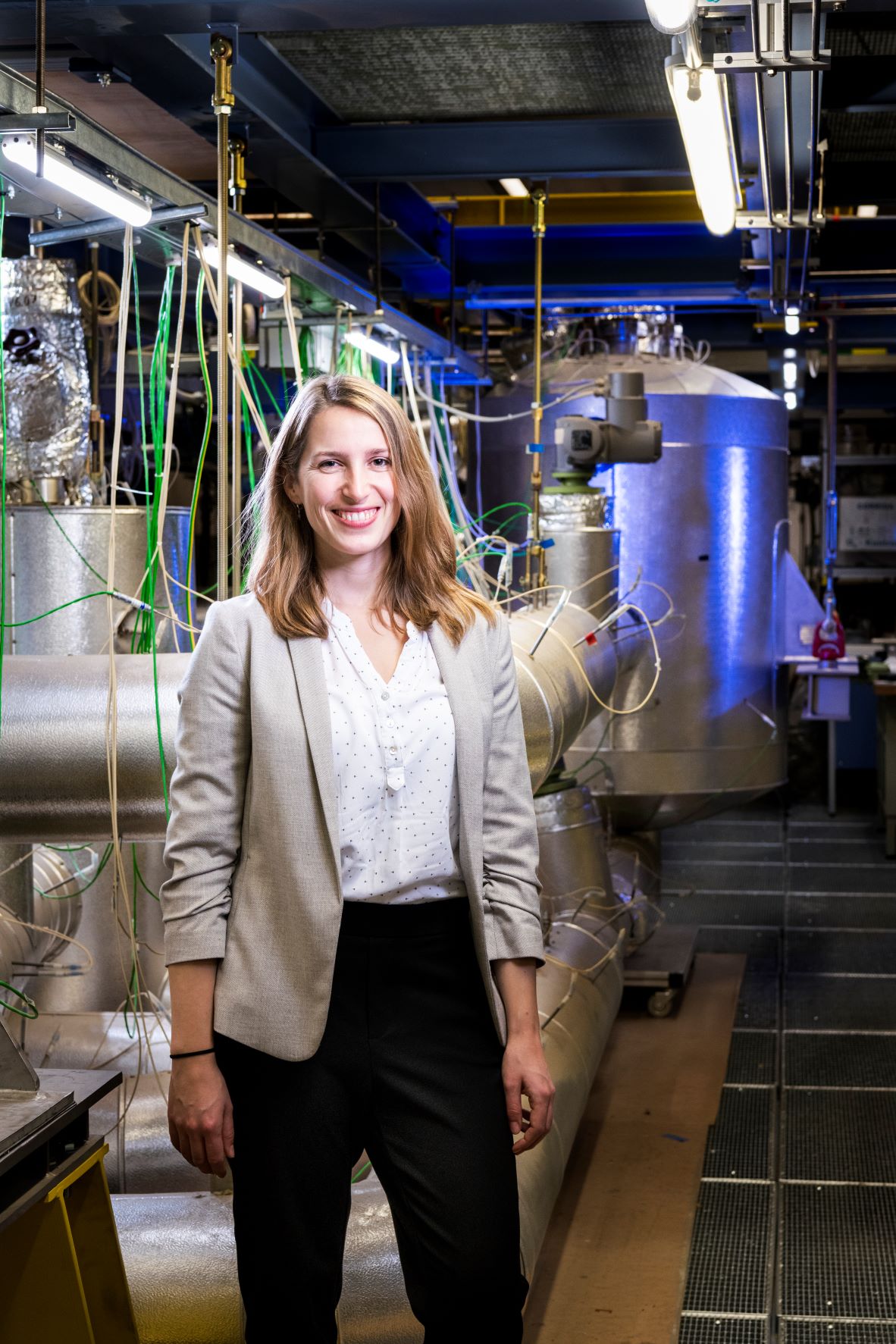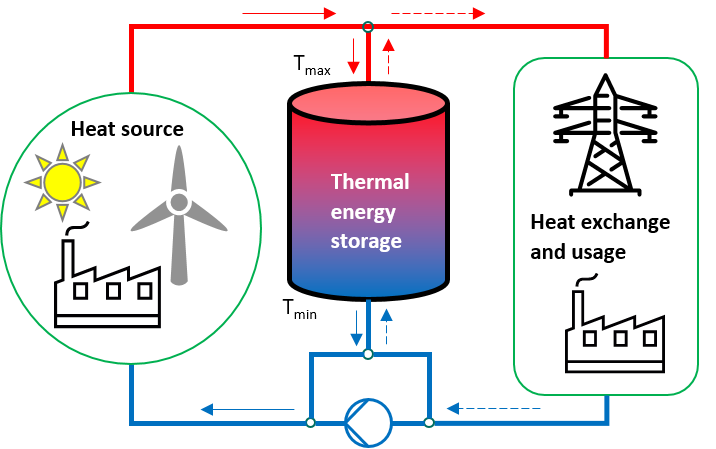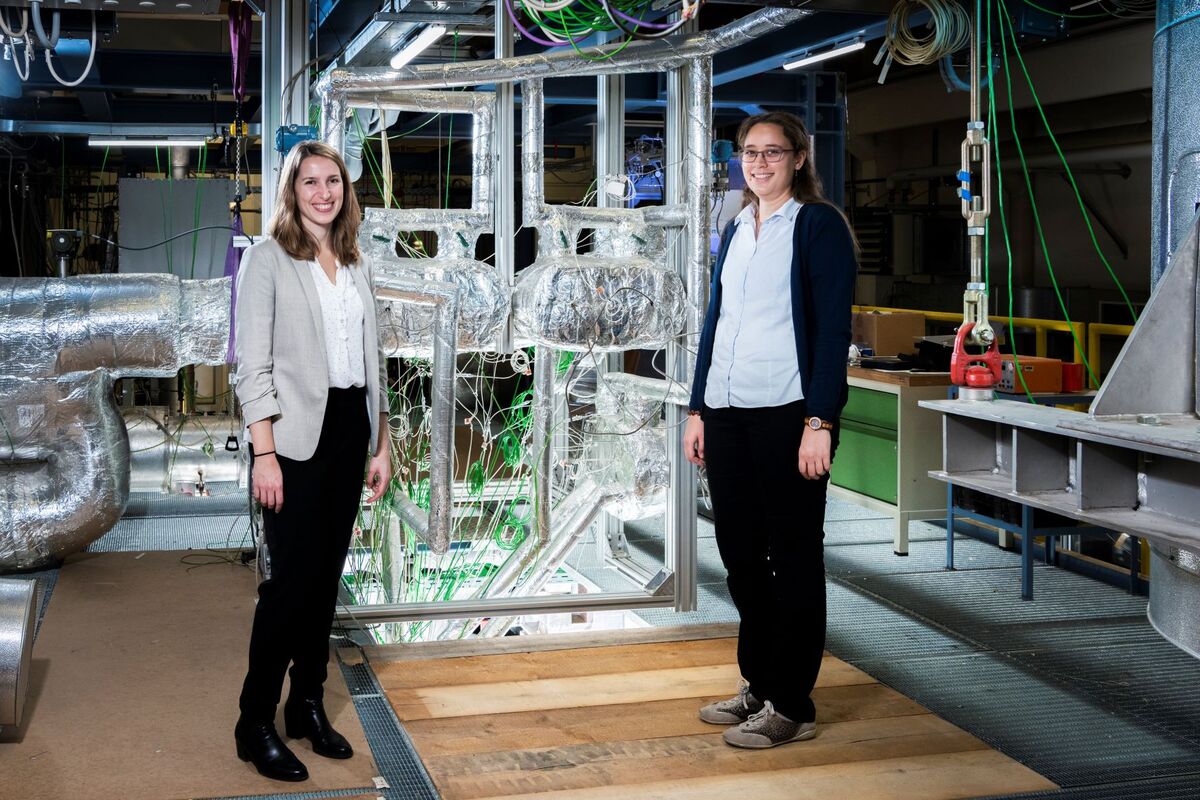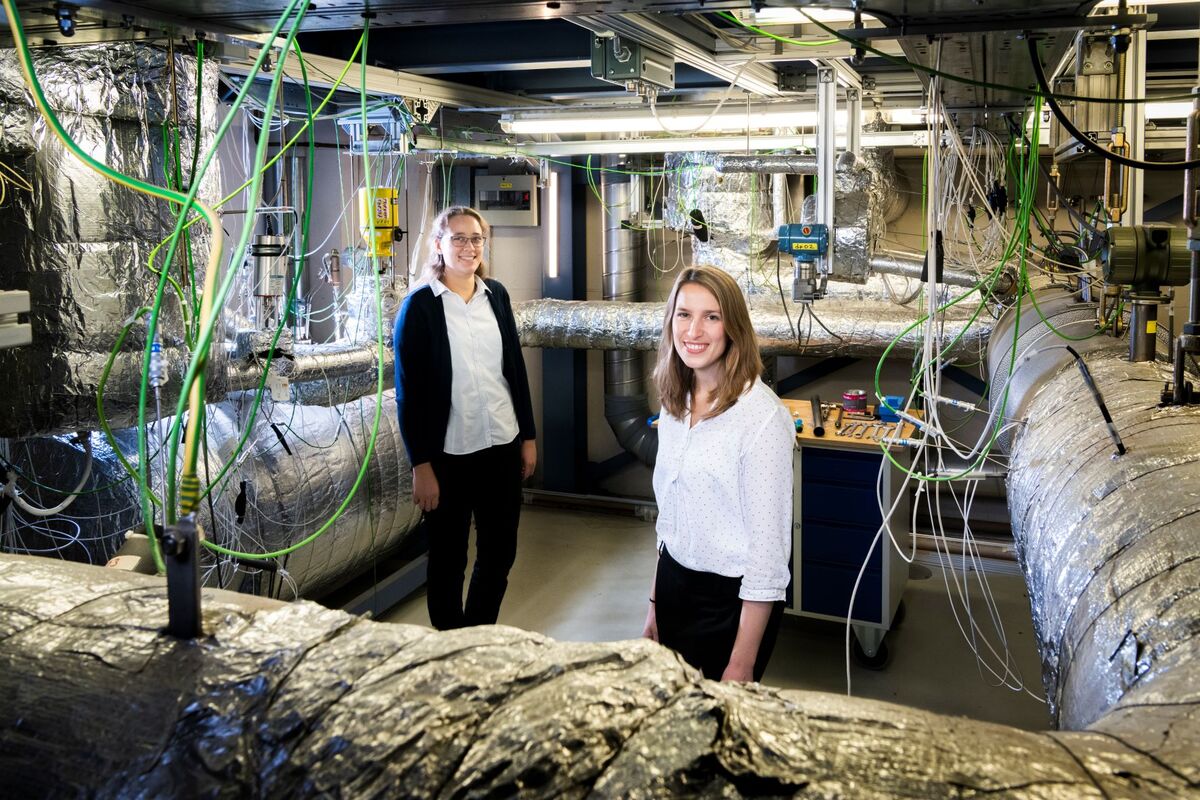Picture a Scientist - Portrait Klarissa Niedermeier
The Woman Who Tames Metal
Long pipes, large tubes, smaller and bigger tanks, tightly packed in insulating material and carefully wrapped in aluminum foil: At first glance, the KALLA liquid metal laboratory at the Karlsruhe Institute of Technology (KIT) appears to be both plain and mysterious. Metals circulate in pipes and tanks at very high temperatures. These liquid metals have promising heat transfer properties and are thus studied by researchers with regard to various demanding applications in industry and energy technology. "KALLA has been existing for more than 20 years and is unique in Europe," says Dr.-Ing. Klarissa Niedermeier. "I think it's great to work in an environment where so much know-how has already been accumulated and where I can contribute new ideas." The process engineer is interested in the sustainable transformation of energy supply. She conducts research at the Institute for Thermal Energy Technology and Safety (ITES) of KIT and is the spokesperson of the MTET subtopic "Thermal Energy Storage", in which four KIT institutes with different research focuses from materials to component development are involved.
Thermal Storage Systems Improve the Use of Renewable Energies
Klarissa Niedermeier is researching possibilities for thermal energy storage with liquid metals. Why thermal energy storage? Wind power and photovoltaic systems generate electricity which fluctuates depending on the time of day, season, and weather conditions. Energy storage helps ensure a supply that meets demand despite these fluctuations. The concept of thermal storage is to store energy in the form of heat when it is available and make it available again when it is needed. To do this, for example, electricity is converted into heat and then used directly, or the heat is converted back into electrical energy via reconversion. Waste heat from energy-intensive industrial processes, such as steel or cement production, can also be stored and reused. High-temperature thermal storage systems have the potential to combine durability and low cost with high efficiency. However, it depends on the materials used and the integration of the storage units into the overall system. Conventional thermal storage systems, such as those installed in solar thermal power plants, are based on molten salts. However, they can only be operated at temperatures between 290 and 565 degrees Celsius. "Liquid metals basically allow much higher temperatures and a wider temperature range - between 150 and 1000 degrees Celsius, depending on the liquid metal used," explains Dr.-Ing. Niedermeier. For this reason, liquid metal-based thermal storage systems can also be considered for supplying energy to industrial high-temperature processes from renewable sources.
At the Laboratory, Liquid Metal Circulates at 700 Degrees Celsius
As part of the LIMELISA project, in which KIT, the German Aerospace Center (DLR), and the pump and valve manufacturer KSB are involved, the team of Dr.-Ing. Klarissa Niedermeier is researching key components for thermal storage systems in a lead cycle at up to 700 degrees Celsius. Since lead has a corrosive effect, special materials are required for the pumps and valves, as well as for the piping and the measurement technology of the test stand. In the framework of LIMELISA, the materials are thus first examined and selected in stagnant liquid metal at the Institute for Pulsed Power and Microwave Technology (IHM). Complete components are then tested at KALLA.
The liquid metal-based storage system for which the researchers are testing these key components is a so-called stratified storage system. Such storage systems require only one tank and are therefore considered to be particularly economical. The hot fluid is located in the upper part of the tank, the cold fluid in the lower part. A thermocline separates the two zones. Since liquid metals are characterized by high thermal conductivity, it is important to prevent the thermocline from spreading and causing temperature equalization. A ceramic-beads particle bed inside the tank serves this purpose. "The particles should have a high heat storage capacity. This increases the storage density and enables a compact design," Klarissa Niedermeier explains. In addition, the particle bed must be compatible with the heat transfer fluid. The team has already built and operated a laboratory-scale storage unit at KALLA. A demonstrator with a capacity of 100 kilowatt hours is currently being constructed. In the future, megawatt hour-scale liquid metal-based thermal storage systems are required to be available for industrial use. It is also possible to operate several storage units in parallel. "It's fascinating to experience how something we originally calculated theoretically gradually becomes reality in practice," Klarissa Niedermeier says.
Text by Dr. Sibylle Orgeldinger, translation by Heidemarie Knierim




